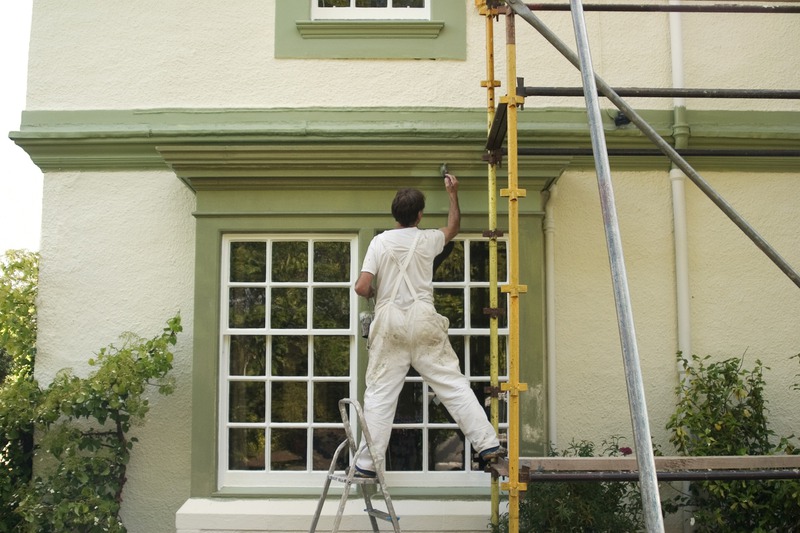Your home’s exterior reflects your style, adds aesthetic value, and protects your property from the elements. Choosing the correct type of paint significantly impacts these factors, providing better durability and preventing unnecessary repair costs. There are many options available on the market today, each offering distinct advantages and disadvantages depending on your specific needs.
Best Paint Choice for Exterior Surfaces
Acrylic latex paint is generally considered the best type of paint for exterior surfaces due to its durability, flexibility, water resistance, ease of use, quick drying properties, and versatility in working with various surfaces. Professionals and homeowners prefer acrylic latex because of its superior adherence, UV resistance, and suitability in diverse weather conditions. This type of paint effectively handles temperature fluctuations and maintains a vibrant appearance for extended periods.
Advantages of Acrylic Latex Paint
-
Durability: Resists fading, peeling, cracking, and blistering.
-
Low Maintenance: Easy to clean with soap and water, prolonging lifespan.
-
Fast Drying: Dries quickly, reducing the risk of dirt and debris sticking to the surface.
-
Environmentally Friendly: Typically has lower VOCs compared to oil-based paints.
Other Paint Options for Exterior Surfaces
Oil-Based (Alkyd) Paints
Oil-based paints are traditional options with a smooth finish and strong adhesion. They often offer a classic appearance and glossy finish, suitable for historical homes or detailed woodwork. Oil-based paints resist water penetration effectively but dry slowly and emit strong odors during application.
-
Advantages: Glossy finish, excellent penetration, suitable for priming bare wood.
-
Disadvantages: Slow drying, higher VOCs, requires stronger solvents for cleanup.
Masonry Paints
Masonry paints are designed specifically for brick, stone, and concrete surfaces. These paints offer specialized protection against moisture penetration and weather-related damages common to porous exterior surfaces. Masonry paints expand and contract with temperature changes, allowing them to maintain coverage and appearance.
-
Advantages: High breathability, excellent moisture resistance, specifically formulated for porous surfaces.
-
Disadvantages: Limited color selection, not intended for wood or metal.
Factors to Consider When Choosing Exterior Paint
While acrylic latex is recommended overall, homeowners should consider several important factors in selecting exterior paint:
Surface Material and Texture
Different paints adhere better to specific materials. Acrylic latex works well on vinyl, wood, and aluminum siding. Masonry surfaces benefit more from specialized masonry paint due to their porous nature, whereas metal and wooden historical or detailed features might call for oil-based products.
Climate and Weather Conditions
Choose paint depending on your regional climate. Acrylic latex suits areas with high humidity, rain, or temperature fluctuations. Areas exposed to intense sunlight may require UV-resistant properties to maintain brightness and prevent fading or discoloration.
Durability and Maintenance
Exteriors exposed to harsh weather require more durable paints. Acrylic latex typically demands less maintenance, saving money in the long run, whereas oil-based finishes might necessitate frequent repainting and professional upkeep.
Environmental Impact and VOC Levels
Homeowners concerned about environmental impact may opt for paints with low VOCs (volatile organic compounds). Acrylic latex paints generally feature lower levels of VOCs, making them eco-friendlier than their oil-based counterparts.
Surface Preparation Guidelines
Preparation significantly influences painting results. Proper surface preparation increases paint adhesion, durability, and appearance. Consider these essential steps for good preparation:
-
Clean Surface: Remove mold, mildew, dirt, and debris before painting.
-
Repair Damage: Fix cracks, peeling paint, holes, or rotted wood.
-
Prime: Use suitable primers for bare and porous materials to enhance paint adhesion.
-
Sand and Smooth: Ensure surfaces are smooth, increasing overall finish quality.
Proper Application Techniques for Exterior Paint
Follow manufacturers’ instructions closely for satisfying results. Professionals recommend several general guidelines for proper application methods:
-
Select Quality Tools: Use quality brushes, rollers, or spraying equipment designed specifically for exterior painting.
-
Avoid Extreme Weather: Painting in humid, rainy, or extremely hot conditions negatively affects paint drying and adherence.
-
Apply in Multiple Coats: Apply multiple thin coats instead of one heavy application for better coverage and durability.
-
Allow Adequate Drying: Ensure each coat dries properly according to the manufacturer’s recommendations before proceeding.
Hiring Professional Painters
Despite valuable DIY techniques, hiring professional painters ensures expertise, proper equipment handling, precise application methods, and reliable results. Engaging professionals ensures long-lasting finishes and efficient completion compared to inexperienced individuals drowning in learning painting processes.
For professional outcomes, consider consulting experienced and reputable exterior painting contractors who provide consistent quality services and guarantee customer satisfaction. Contractors experienced in exteriors handle all necessary preparation, cleaning, application techniques, and finishing steps professionally, improving appearance, value, and durability effectively.
Choosing Exterior Painters in Specific Locations
If you have a home or property for exterior painting in Big Rapids MI, using local painting professionals ensures familiarity with regional weather patterns, suitable paints, popular colors, and common surface issues. Local painters offer area-specific benefits in selecting paints suitable for regional conditions, protecting homes effectively and efficiently.
Cost and Longevity Concerns
Choosing an appropriate paint type impacts initial cost and long-term investment in your home. Acrylic latex paints are generally affordable, considering lifespan, lower VOC emissions, and ease of maintenance. Oil-based paints initially may seem attractive costing-wise, yet require more frequent repainting and costly maintenance.
Similarly, for homeowners and property managers considering exterior painting in Muskegon MI, local painting experts tremendously help determine optimal materials and colors thriving in Muskegon’s local climate and ensuring proper protections against moisture, humidity, salt spray, and winter conditions unique to this region. Selecting local professionals makes sense practically and economically by reducing potential weather-related issues.
Closing Remarks
Selecting suitable exterior paint enhances appearance, ensures excellent protection against environmental elements, and extends the longevity and attractiveness of your property. Acrylic latex paint remains the leading paint type recommended by professionals and homeowners alike. Carefully considering factors like climate, surface material, environmental impact, and professional help proves beneficial for effective exterior painting results.













More Stories
How to Choose a Reliable Fence Contractor: Key Qualities to Look For
Selecting the Right Materials and Techniques in Stone Masonry
What Should You Look for in a Top Custom Home Builder?